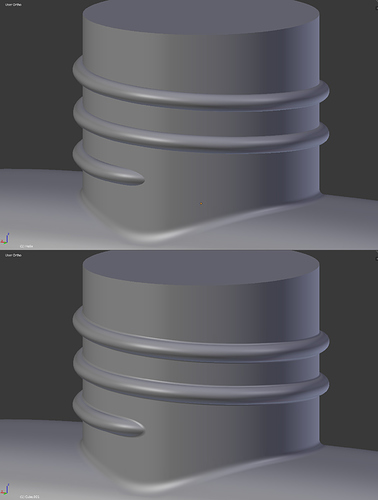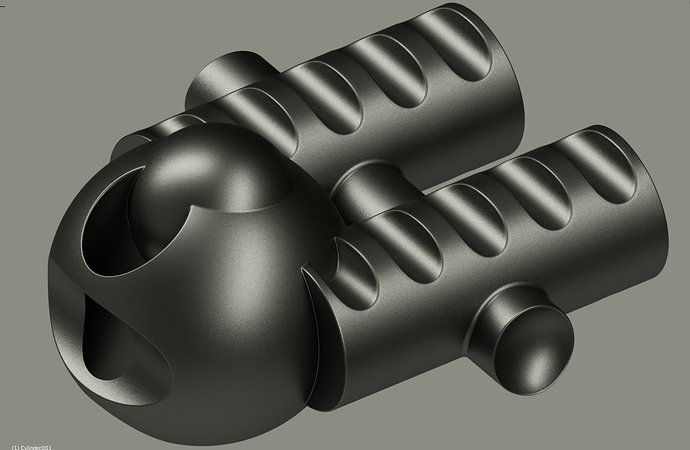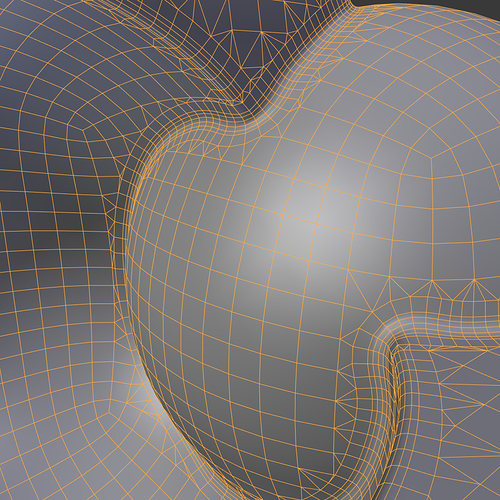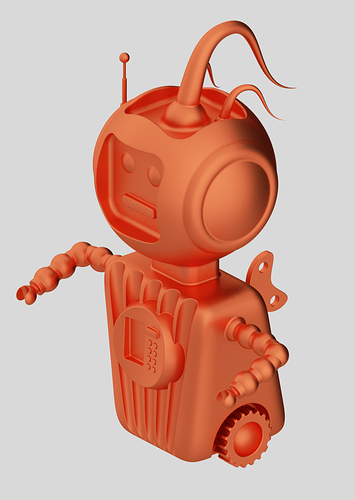Ilya, can we test the your latest speed additions?
I now started to make a new version. The attached file is an old version with some corrections.
Attachments
boolean_bevel_v_0_0_3_(test).py.zip (5.33 KB)
Looks good, but seems only to work best with high dens meshes!
Could you please post your last updates into the first post as well?
It is easier to find…
It will be a nice add-on, go on!
Thank you Ilya so much. The latest version is much faster and UI is organized very well.
With some tweakings i get very nice results with your addon on really complex situations:
this tool is crazy. I love the idea of it. Keep it goin!
id donate to this.
Good try Tungee! Below is another try. Something that someone has to be aware is to have many polygons on the surfaces of cylindrical objects too. Wherever there are many polygons the results are better (many polygons and curvy surfaces). In fact with a little care someone may achieve very fine results. I think that with this version of the plugin someone may accomplish already many filleting tasks, apart from intersecting the seams.
Ready to test, Ilya!
Whenever you have something you feel that can be tested put the link so may we test it Ilya… it is better to have many opinions…
Right Fatesailor, high polygon density and curvy surfaces are essential for the addon to work properly.
If the possible max bevel width is reached from the addon, you can sometimes get further widths with the generated bevel-modifier.
As I have said before too, Mesh fusion and Hardmesh also work with dense meshed objects. It is a prerequisite for making such operations and achieving such results. But this is not a problem, given that such tools are not aimed for objects to be used in games, their aim is rather for use in still images, objects to be used in movies and, a very important field: prototyping.
It seems that now, with all those efforts of Ilya (and some other people here… there are some others too who inspired from Ilya’s work have focused their attention in finding solutions towards the same goal), we are very near to having such a tool in Blender also. A tool that will revolutionize modeling in Blender.
As to the matter of producing very thin bevels-fillets in objects, implementing a shading method (there are already such bevel shaders around… we to here have one, as an osl script) would be enough. But the Mesh fusion like methods are indispensable for achieving large seam-filletings in various modelling tasks.
@fatesailor
I have waited for something like this for long time. Sometimes I using Hard Mesh and it’s cool, it helps me in prototyping as you said before, but this method is completly different, mesh-fusion-wannabe approach and I looking forward for updates. If this tool will look more close to mesh-fusion having similar non-destrucive modeling options, then I will buy it for sure. For now I think one of the most hard question or task is how to make it non-destrucive, is there any posibility for that, because accepting sub-d isn’t really great.
 Great!!! I need to find time and test it more.
Great!!! I need to find time and test it more.
Veezen… making the tool work in a non-destructive way is a goal that can be considered after its been accomplished as to its core functions. It is a good idea but it is not a priority. The first thing to be focused on is to have it working on any kind of surface and making it achieve filletings of any thickness.
The most recent version is complete as to achieving a part of its goals. It does not fail to do its work in most situations. It produces flawless filletings even on surfaces of considerable complexity. Now the thing that remains is to overcome its restrictions… that’s to say its inability to produce filletings even in cases of previously filleted areas. And, of course, to overcome its difficulty to produce cuts of any thickness (because it has some restrictions in this field too).
I think that when it will be ready to make full filleting in an object as the one in the image below it will be a fully accomplished tool.
It is not necessary to do all the filletings at once of course. It is enough if it produces them successively.










